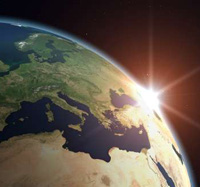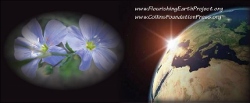The following was sent to us by Jean Lombardo, a co-author published by the Collins Foundation Press:
 A flourishing Earth would be one with a controlled human population. Philosophers and utopians have started from this premise. Plato advised correlating population to available land and nearness to neighbors and Aristotle wrote that the population of an ideal state should be “as small as we can make it without sacrificing independence.” In Utopia, Thomas More kept his cities manageable by strict regulation of family size. The French philosopher, Condorcet, envisioned a future in which “men will know that” their duties “consist not in giving existence to a great number of beings, but happiness. They will have for their object the general welfare of the . . . society in which they live and not the puerile idea of encumbering the earth with useless and wretched mortals.” William Morris’s nineteenth-century agrarian utopia, News from Nowhere, posited an ideal state where the population was stabilized and distributed evenly throughout the land. Crowding, slums, and urban blight were eliminated and the meadows and forests revived. Postmodern utopias, too, such as Robert Sawyer’s Neanderthal Parallax follow suit; in a parallel universe, the limits set on global population by the ecologically enlightened Neanderthals contribute to social order and existence in harmony with the natural environment.
A flourishing Earth would be one with a controlled human population. Philosophers and utopians have started from this premise. Plato advised correlating population to available land and nearness to neighbors and Aristotle wrote that the population of an ideal state should be “as small as we can make it without sacrificing independence.” In Utopia, Thomas More kept his cities manageable by strict regulation of family size. The French philosopher, Condorcet, envisioned a future in which “men will know that” their duties “consist not in giving existence to a great number of beings, but happiness. They will have for their object the general welfare of the . . . society in which they live and not the puerile idea of encumbering the earth with useless and wretched mortals.” William Morris’s nineteenth-century agrarian utopia, News from Nowhere, posited an ideal state where the population was stabilized and distributed evenly throughout the land. Crowding, slums, and urban blight were eliminated and the meadows and forests revived. Postmodern utopias, too, such as Robert Sawyer’s Neanderthal Parallax follow suit; in a parallel universe, the limits set on global population by the ecologically enlightened Neanderthals contribute to social order and existence in harmony with the natural environment.
How do you envision the population of our flourishing Earth? Post your comments below…
 Jeanne Belisle Lombardo is Co-director Center for Future Consciousness, Scottsdale, AZ, www.centerforfutureconsciousness.com, and author of “Utopia and the Evolution of Wisdom” forthcoming in Science, Wisdom, and the Future: Humanity’s Quest for a Flourishing Earth, published by the Collins Foundation Press (Early Summer 2010).
Jeanne Belisle Lombardo is Co-director Center for Future Consciousness, Scottsdale, AZ, www.centerforfutureconsciousness.com, and author of “Utopia and the Evolution of Wisdom” forthcoming in Science, Wisdom, and the Future: Humanity’s Quest for a Flourishing Earth, published by the Collins Foundation Press (Early Summer 2010).








